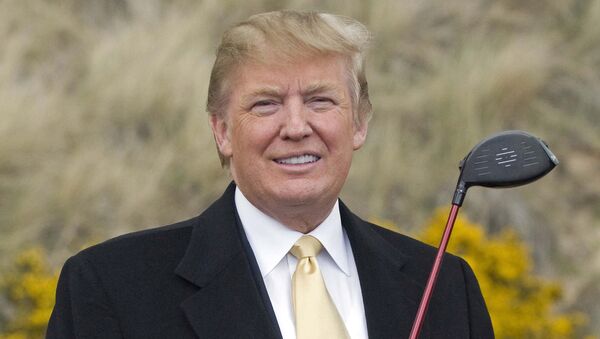Kristian Rouz – President Trump and top GOP policymakers are set to unveil a major corporate tax cut Wednesday, aimed at boosting US economic growth and business efficiency. The White House has not achieved any major tax reductions since 1986, and the current proposals are designed to spur job-creation and corporate profitability rather than benefiting top earners.
America’s wealthy are unlikely to see any tax cuts at all under the proposed fiscal overhaul, as the top income tax bracket of 39 percent is poised to remain in place. However, the 35 percent corporate tax is poised to decrease to 18-23 percent, allowing corporate America to invest and reinvest the released capital, including to its workforce.
“They’re not going to cut the highest income tax rate. They’re not,” said Stephen Moore of the Heritage Foundation think tank.
President Trump will deliver his major tax speech in Indiana on Wednesday, and according to his vision, the top income tax bracket should be 35 percent, whilst the corporate tax rate could be reduced to as low as 15 percent. However, Republican lawmakers, who stick with the revenue-neutrality dogma, might see such a proposal as too radical, as its positive effects on budget revenues will take time to materialize.
Overall, President Trump says the tax plan unveiled Wednesday will include “massive” across-the-board tax cuts.
The president, however, said in recent weeks that the top individual income tax of 39 percent might actually remain, whilst deeper tax cuts would be proposed for the middle class. Meanwhile, low-income workers will see the most dramatic decrease in their income taxes.
Such measures are expected to boost US economic activity, and, according to the Laffer curve rule, will produce a broader tax revenue generation framework, thus making up for the initial contraction in budget revenue.
“The details leaking out of the Big Six meetings paint a clear picture of an unprecedented tax giveaway for the most fortunate and biggest corporations,” Democratic Senator Ron Wyden of the Senate Finance Committee says.
The Big Six refers to the top six GOP policymakers, which include both congressional leaders and the Treasury secretary.
The Democrats, in their attempts to derail the president’s economic reform agenda, say the tax cut will benefit “the rich,” whilst hurting “the poor,” as Congress is eyeing cuts in generous social giveaways. The Democratic Party is not concerned about the hypothetical economic benefits of looser fiscal policies; instead, they are focusing on the redistribution of existing wealth, which is a zero-sum game.
Many Republicans are also stuck within the zero-sum game mentality, as evidenced by their adherence to the “revenue neutrality” narrative.
“Our expectation is that it will be a bold transformative tax reform. That would mean a dramatic corporate rate cut, an aggressive stripping out of set-asides and special interest carve-outs and simplification,” Tim Phillips of Americans for Prosperity said.
Individual income tax is the simplest part of the overhaul, and that is the reason it is not getting a lot of attention during discussions and the related media coverage. Yet, it is the most important part of the fiscal reform, as it can significantly boost purchasing power in the economy, 72 percent of which is driven by domestic consumption.
Corporate tax rates are more complex, however, and are not subject to solely political will. The Big Six are seeking to bring back to America $2.6 trillion in offshore corporate profits at a 3.5 percent reinvestment rate and an 8.75 percent rate in cash and equivalent.
The Trump administration also seeks to boost stagnant inflation, as American workers and enterprises alike are expected to increase spending with more money remaining on their balance sheets after tax.
The likely macroeconomic effects of the proposed fiscal package will be more evident after the tax plan is announced and agreed upon.




